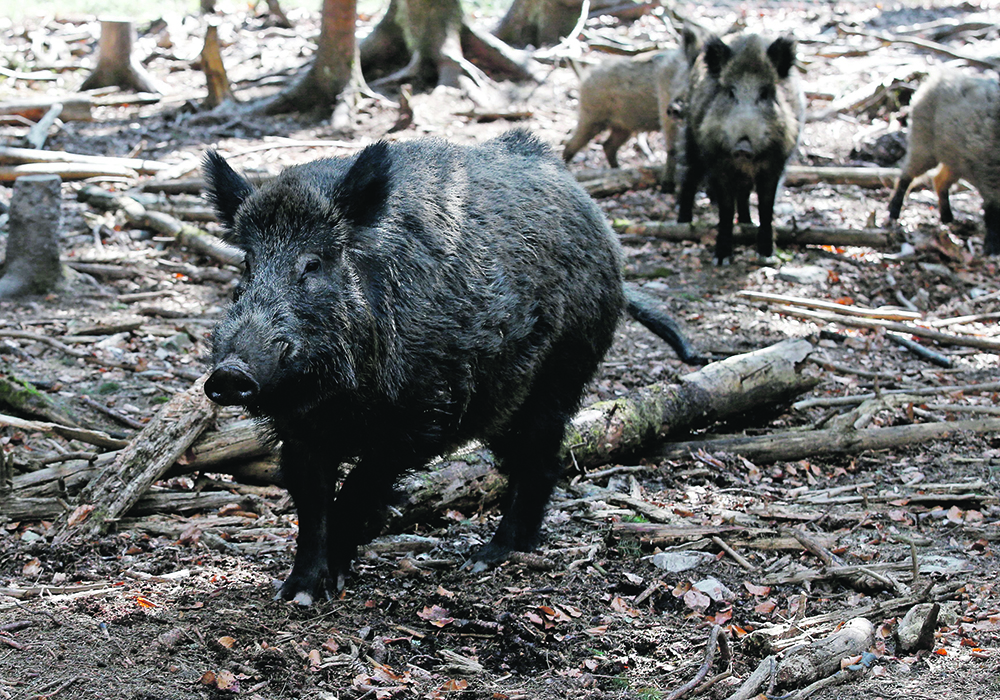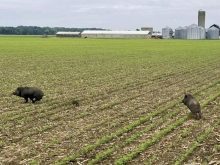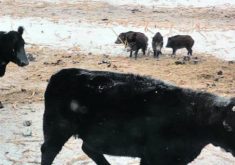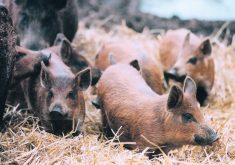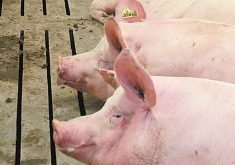Research that tracked three animals highlights how far they will travel and the lengths they will go to keep moving
BRANDON — Rudiger, Dietmar and Cindy teach much about the wanderings of wild pigs.
These three eastern German wild boars were tracked as one crossed back and forth between Poland and Germany, all three wandered far from where they were first spotted and tagged and all were unfazed by natural barriers that would put off lesser beasts.
Recent wild pig stories:
- Wild pig experts divided over extent of the problem
- Wild pig control gains momentum on Prairies
- More funds on the way for wild pig fight
- VIDEO: Shooting not the answer with wild pigs
- Ont. faces unique wild pig challenges
“Dietmar goes through big rivers … and comes back into Germany,” Egbert Gleich, a wild pig eradication researcher with the Brandenburg State Forest, said at Canada’s first Wild Pig Summit.
Read Also

New program aims to support plant-based exports to Asia
Understanding the preferences of consumers in Taiwan and how they differ from Indonesia or Malaysia isn’t easy for a small company in Saskatchewan.
Dietmar showed himself to be a wanderer by nature, ranging from Poland, which has a significant and widespread outbreak of African swine fever, and Germany, crossing rivers and wandering through forests on both sides of the frontier.
For Germany, which has dedicated itself to eradicating ASF from its territory, that leaky border is a worry.
“We must stop the Polish disease front, and we must eradicate ASF in Germany,” said Gleich, who has been fighting the spread of the disease for years since it first crossed from Poland.
ASF is a threat to commercial hog farmers with wild pigs a potent vector and reservoir of the disease. The disease has spread from Asia to Europe’s Atlantic coast through wild pigs, as well as within commercial pig movement in areas with weak biosecurity.
Wild boars are native to Europe, with most European wild pigs being non-invasive wildlife.
While the disease is new to western Europe, wild pigs are not. The German efforts at ASF eradication involve hitting hot spots of ASF infection and areas that have high populations of wild pigs. If ASF-infected pigs can be eliminated, and wild pig numbers kept low, the Germans believe the disease’s spread can be stopped.
Cindy, Rudiger and Dietmar were all wild pigs followed by researchers to expose the real life of the animals, which is still little understood.
Gleich said previous assumptions about wild pigs’ typical ranges were overturned by observing these three pigs, which wandered over far larger territories than expected.
For example, females were believed to wander around in only a 3,000 acre zone, but Cindy wandered over 10 kilometres and was shot two km from where she was first spotted.
The males are the true wandering spirits, travelling much further and, in the case of Dietmar, being willing to ford rivers as the spirit took him.
Wayne Lees, the head of Manitoba’s Squeal on Pig program, has studied the German research and said it verifies their observations about the roaming nature of wild pigs.
“I was amazed by the wide home range of some of these pigs,” said Lees.




